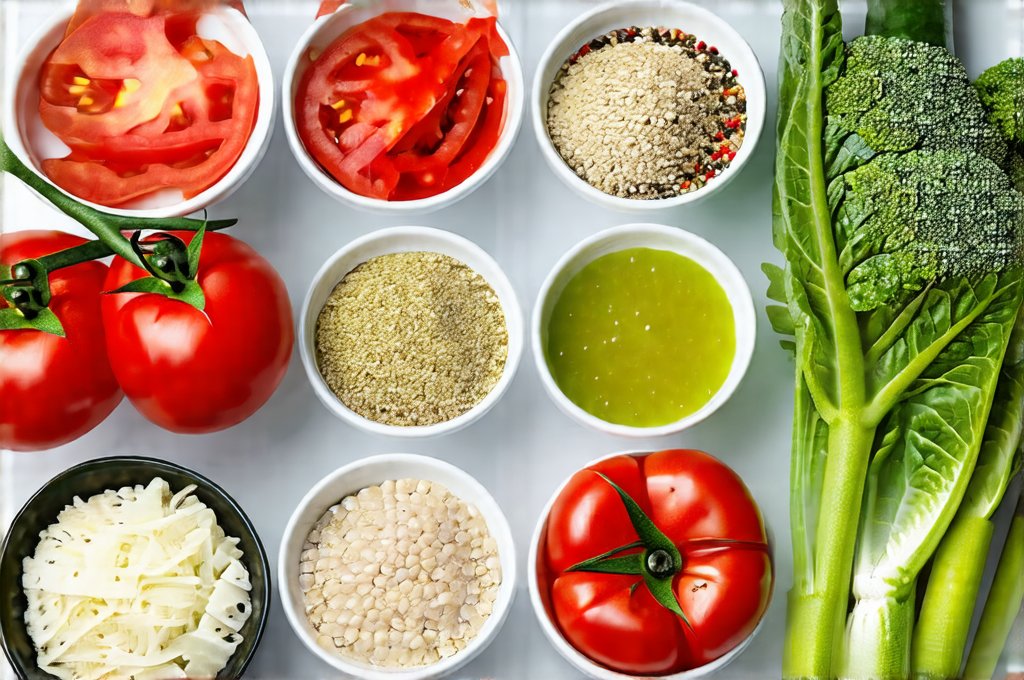Gastroesophageal reflux disease (GERD) impacts millions, often requiring significant dietary adjustments alongside medical treatment. Many conventional GERD diets immediately eliminate entire food groups – tomatoes, citrus fruits, chocolate, caffeine – leading to restrictive and sometimes unnecessarily limited eating plans. This can be disheartening for individuals managing chronic heartburn or acid reflux, as it feels like enjoyable foods are forever off-limits. However, a well-designed GERD meal plan doesn’t have to mean deprivation; instead, it’s about understanding trigger foods and finding delicious alternatives that support digestive health.
This article focuses on crafting a GERD meal plan without relying on tomatoes or citrus ingredients – common culprits for triggering acid reflux in many individuals. We’ll explore how to build flavorful meals while avoiding these potential irritants, focusing instead on easily digestible options and mindful eating habits. This isn’t about eliminating taste; it’s about adapting recipes and discovering new culinary possibilities that prioritize comfort and well-being. The goal is a sustainable approach to dietary management that allows you to enjoy food without the worry of painful symptoms. Understanding your individual triggers can be greatly improved with a weekly gut-healthy meal plan focused on seasonal foods.
Understanding GERD & Dietary Triggers
GERD occurs when stomach acid frequently flows back into the esophagus, causing irritation and inflammation. While individual triggers vary greatly, there are some common culprits. Fatty foods, for instance, can relax the lower esophageal sphincter (LES), allowing acid to escape. Similarly, highly acidic foods like tomatoes and citrus fruits directly irritate the esophageal lining. Caffeine and chocolate can also contribute to LES relaxation or increase stomach acid production. Identifying your personal triggers is crucial – keeping a food diary can be incredibly helpful in this process. If you struggle with nausea, explore anti-nausea diet strategies to help manage symptoms.
It’s important to remember that dietary changes are often most effective when combined with other lifestyle modifications, such as elevating the head of your bed, avoiding late-night eating, and maintaining a healthy weight. Medication prescribed by your doctor remains a primary treatment option for GERD; dietary changes should be viewed as complementary support. This plan focuses on minimizing potential triggers while still providing balanced nutrition. Additionally, consider how GERD and persistent phlegm can impact your overall digestive health.
Building Your Tomato & Citrus-Free Meal Plan
The foundation of a GERD-friendly diet centers around easily digestible foods that won’t exacerbate symptoms. Lean proteins – chicken, fish, and turkey – are excellent choices. Complex carbohydrates like oatmeal, brown rice, and quinoa provide sustained energy without being overly acidic. Vegetables (excluding tomatoes) should form a large part of your meals; consider options like green beans, broccoli, cauliflower, potatoes, and carrots. Healthy fats from sources like avocado and olive oil can also be incorporated in moderation.
Focusing on cooking methods is also important. Baking, grilling, steaming, or poaching are preferable to frying, which adds unnecessary fat. Portion control plays a role too – larger meals put more pressure on the LES, increasing the risk of reflux. Hydration is essential; drinking water throughout the day helps dilute stomach acid and aids digestion. Remember that every individual’s tolerance levels differ, so pay attention to how your body responds to different foods and adjust accordingly. A well-planned 7-day GERD diet meal plan can give you a great starting point!
Meal Planning Strategies
- Breakfast: Start your day with a gentle option like oatmeal with almond milk and a drizzle of maple syrup, or scrambled eggs cooked in olive oil with spinach. Avoid coffee and orange juice (obviously!).
- Lunch: Opt for lean protein sources such as grilled chicken salad on a bed of mixed greens with an avocado-based dressing, or turkey breast sandwich on whole wheat bread with cucumber slices.
- Dinner: Baked salmon with roasted vegetables (broccoli, carrots, potatoes) is a nutritious and satisfying meal. Alternatively, consider a lentil soup with a side of quinoa.
- Snacks: Choose GERD-friendly snacks like bananas, applesauce (unsweetened), or a small handful of almonds.
Foods to Favor & Avoid
Here’s a quick guide:
Favor:
* Lean proteins (chicken, fish, turkey)
* Complex carbohydrates (oatmeal, brown rice, quinoa)
* Non-citrus fruits (bananas, apples, pears)
* Vegetables (green beans, broccoli, cauliflower, potatoes, carrots)
* Healthy fats (avocado, olive oil)
* Almond milk
Avoid:
* Tomatoes and tomato-based products
* Citrus fruits (oranges, lemons, grapefruit)
* Chocolate
* Caffeine
* Peppermint
* Spicy foods
* Fatty foods
* Alcohol
* Carbonated beverages
Navigating Restaurant Dining & Social Events
Dining out or attending social events can be challenging when managing GERD. Here are some tips:
- Plan ahead: Review the menu online if possible and identify potential options that fit your dietary needs.
- Communicate clearly: Don’t hesitate to inform your server about your dietary restrictions, specifically requesting no tomato or citrus ingredients in your meal.
- Choose wisely: Opt for grilled, baked, or steamed dishes over fried or heavily seasoned items.
- Portion control: Be mindful of portion sizes and avoid overeating.
- Hydrate: Drink plenty of water throughout the event.
- Bring a snack: If you’re unsure about available options, consider bringing a GERD-friendly snack to ensure you have something safe to eat. Learning how to create a weekly GERD meal prep plan can make navigating social events easier too!
It’s important not to feel restricted or deprived when managing GERD. With careful planning and mindful choices, you can still enjoy delicious meals while minimizing symptoms and improving your overall well-being. This meal plan provides a starting point – listen to your body, adapt it to your preferences, and remember that consistency is key to long-term success. It’s also helpful to be aware of soft stools after days with no meal planning as this can impact your overall digestive health.


















